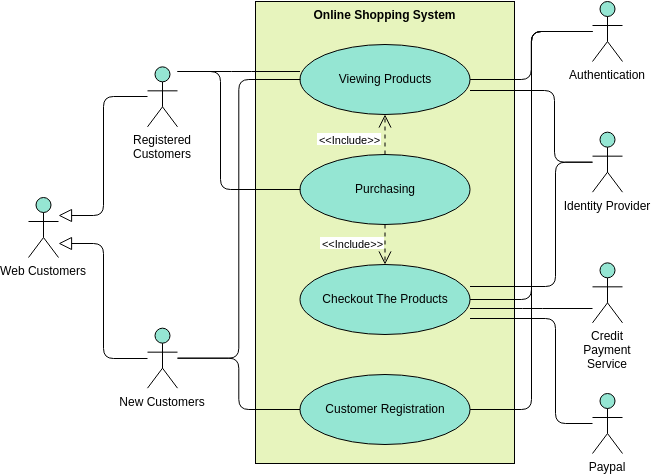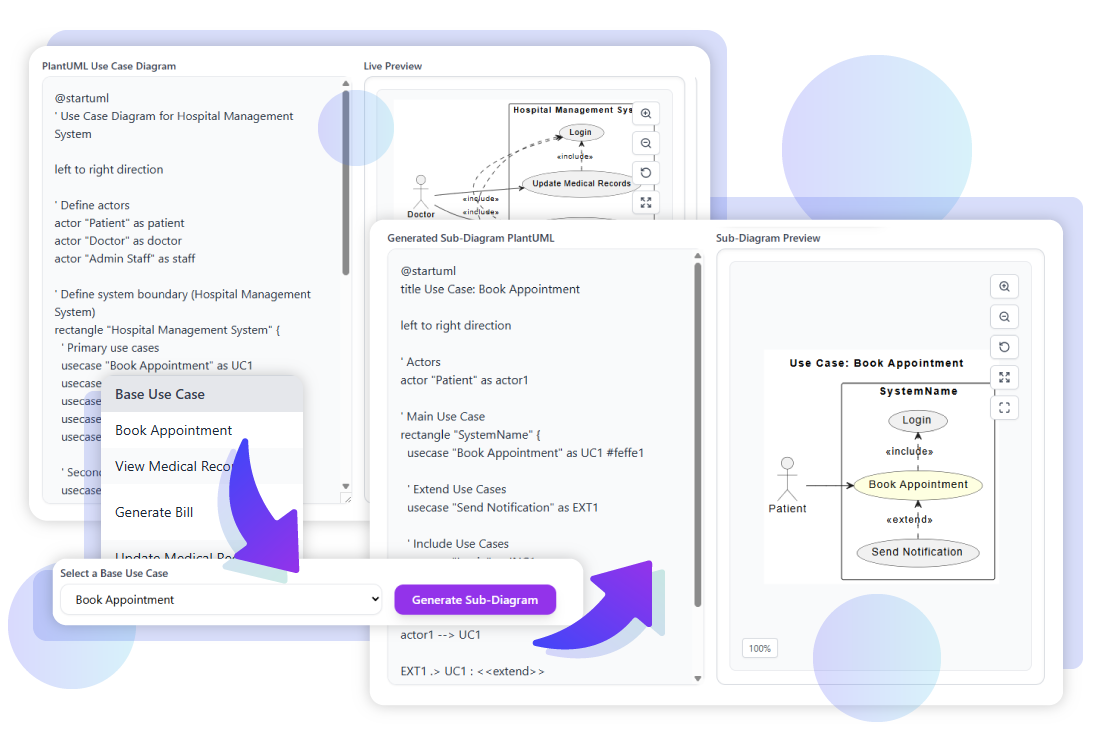Now Reading: Why Focus on a Specific Use Case with Include and Extend Relationships? | Extend and Include Use Case Analyzer
-
01
Why Focus on a Specific Use Case with Include and Extend Relationships? | Extend and Include Use Case Analyzer
Why Focus on a Specific Use Case with Include and Extend Relationships? | Extend and Include Use Case Analyzer
Use case diagrams can grow rapidly in complexity. As you add more actors, use cases, and especially and relationships, the diagram can turn into a tangled web of connectors. What started as a clear overview may become confusing even for experienced designers.
Why It Matters to Distinguish Them
- Too many connectors: Relationships crisscross the diagram, making it visually heavy.
- Mixed relationships: Mandatory steps and optional scenarios blend together, and it is not always clear which is which.
- Stakeholder confusion: Business teams may only want to understand a specific feature, not the entire system.
This complexity often means the diagram stops being a communication tool and starts being a puzzle.

Why Focus on One Use Case with Its Includes and Extends
Zooming in on a single use case, together with its and connections, provides clarity in several ways:
Understand Essentials vs. Optionals
By isolating one use case, you can clearly see which behaviors are mandatory (<include>) and which are conditional (<extend>).
Targeted Conversations
Stakeholders can focus on the process that matters to them, without being distracted by unrelated parts of the diagram.
Better System Validation
Developers and analysts can confirm whether the included behaviors are correctly reused, and whether the extended ones are appropriately triggered.
Cleaner Visuals
Instead of wading through dozens of connectors, you see only the relationships relevant to the chosen use case.
How the Extend and Include Use Case Analyzer Supports This
The Extend and Include Use Case Analyzer makes focusing simple:
- Paste your PlantUML diagram into the tool.
- The analyzer builds a relationship table, listing for each base use case its actors, <include> use cases, and <extend> use cases.
- Select a base use case from the drop-down menu.
- Generate a sub-diagram that shows only:
- The chosen use case
- Its related actors
- Its <include> and <extend> relationships
This acts like a smart filter. Instead of redrawing diagrams by hand, you can instantly highlight the relationships around one use case, with mandatory and optional behaviors clearly separated.


